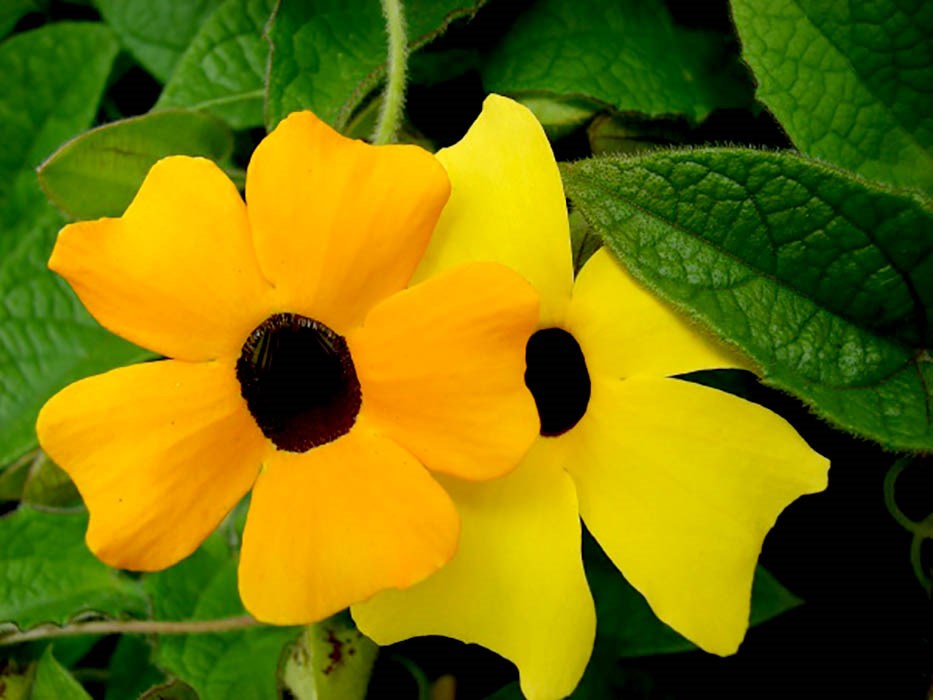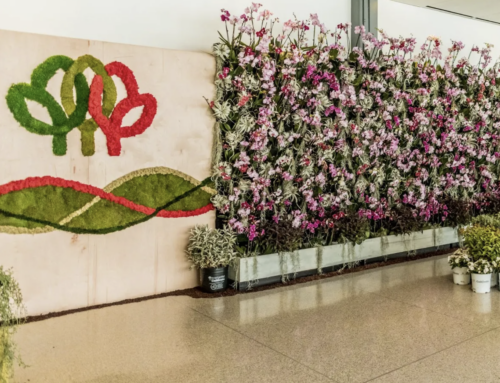I recall this vine plant in my early years when I worked in a garden center. Honestly, I didn’t find it overwhelming. And the name, why call it something it isn’t, that is a Black-eyed Susan. The vines didn’t seem strong, growth seemed slow and flowers were simply here and there. They did not sell well as the other annual vines: Morning Glory, Moon Vine, Sweet Pea, Scarlet Runner, and my odd-ball favorite, Purple Hyacinth Bean (detailed in a past blog posting). It appeared the Black-eyed Susan Vine only had limited appeal, mainly to the more discretionary gardeners and older folks.
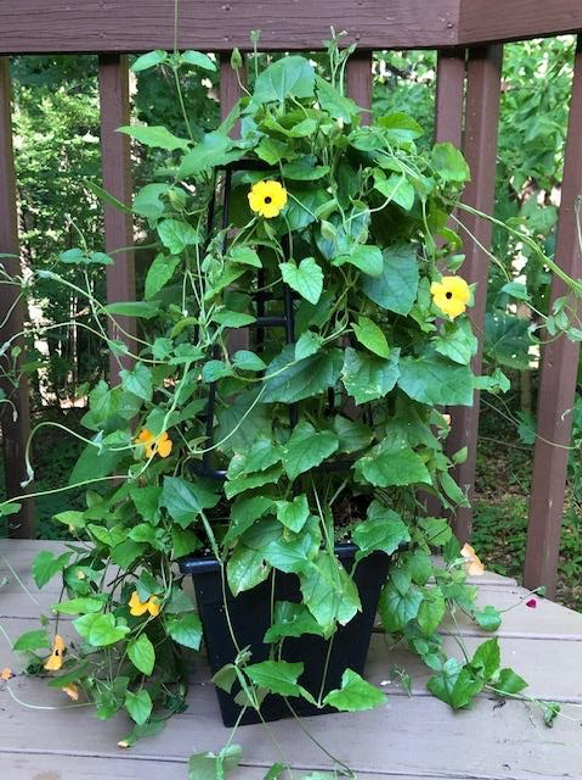
Black-eyed Susan growing on the deck
In recent years, I’ve become fonder of this plant, also known as the “Clock Vine.” Perhaps the attraction is because I’m a more seasoned, older folk. The clean yellow flowers with the black center are just the right size, not bold and huge like a Clematis but more refined. I have not seen flowers smother the foliage like some unruly annual vines, but more of a subtle, careful flower distribution over dark green foliage. It might also be that this species and varieties have improved vigor, larger blooms and color additions. Originally, I only recalled the clear yellow flower, and now orange, red, orange-red, and white varieties can be found. Sun or partial sun will encourage the best flowering and growth. In an ideal environment, they reach a 6-8’ spread and/or climb. Moist, well-drained soil is preferred.
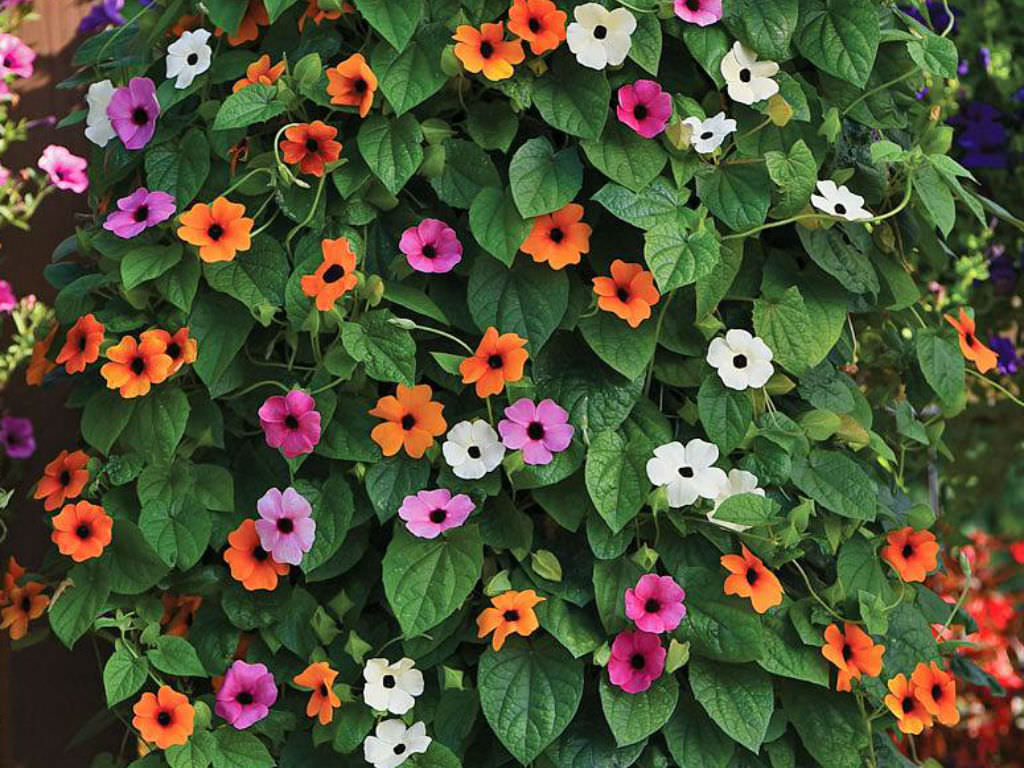
Variety of colors
The vine is a member of the genus Thunbergia with a range of species native to or successfully grown in tropical, sub-tropical, and some moderate temperate zones. In India, fresh root extracts from the Thunbergia are used as a health tonic and interestingly enough, an aphrodisiac. In parts of East Africa, Thunbergia is grown and raised as feed for cattle. Hardly a threat in Plant Hardiness Zone 5 and lower, it can be invasive especially in the tropics displacing native flora. We will focus on the annual, Thunbergia alata as it is most readily available in garden stores as both seed and young plants. Though commonly grown for a single season, in geographic areas where heavy frosts don’t exist, it can be grown and maintained as a perennial.
Not as fast as a Morning Glory, Black-eyed Susan Vine climbs by means of twining. The stretching shoots extend into a spiral wrap, grabbing hold of whatever they can. It readily climbs trellis, pergola, railing, fences, and with some help, a post. It adapts to the confines of a container which makes its placement more strategic when growing with a target destination in mind. Strings can be helpful to persuade or guide vines in a specific direction to a structure where it will be featured. Given the appropriate container, it will mound, trail, and meander as well. It is always wise to know if there is research or history available on a plant’s tolerance to deer. Some states do include Black-eyed Susan Vine on their “Resistant List” but other sources indicate deer may not always read the list. It is best to consider the vine “low preference” for deer and be attentive to any signs of browsing.

Invasive when planted outside its native habitat and can take over an area. (Hawaii)
Call it Black-eyed Susan Vine or Clock Vine, it is like many of the annual vines we love, flowering early once the weather turns warm. Even better, the blooms continue all summer long.
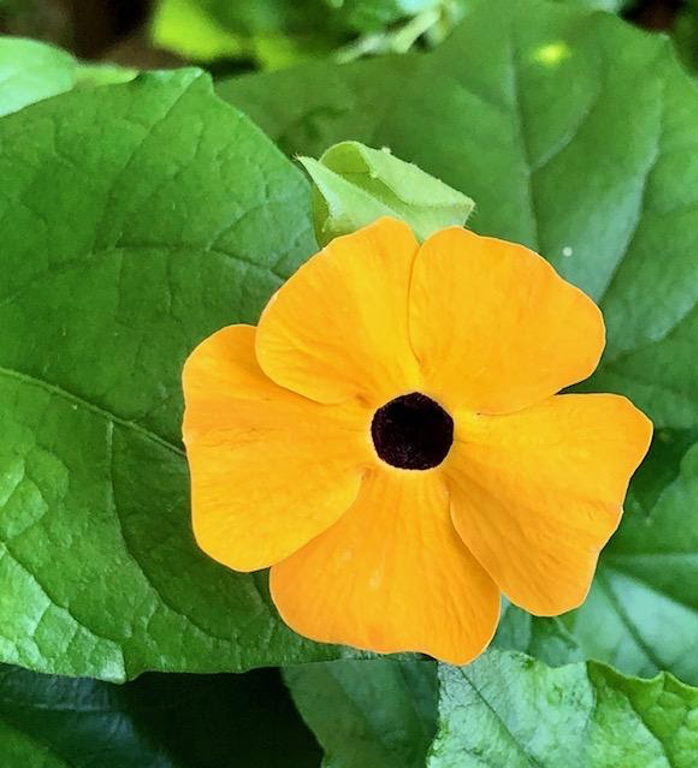
From my garden
-Rob McCartney, Horticulturist
Please feel free to contact me with any questions or for more info at:
Connect with us on social media!
I recall this vine plant in my early years when I worked in a garden center. Honestly, I didn’t find it overwhelming. And the name, why call it something it isn’t, that is a Black-eyed Susan. The vines didn’t seem strong, growth seemed slow and flowers were simply here and there. They did not sell well as the other annual vines: Morning Glory, Moon Vine, Sweet Pea, Scarlet Runner, and my odd-ball favorite, Purple Hyacinth Bean (detailed in a past blog posting). It appeared the Black-eyed Susan Vine only had limited appeal, mainly to the more discretionary gardeners and older folks.

Black-eyed Susan growing on the deck
In recent years, I’ve become fonder of this plant, also known as the “Clock Vine.” Perhaps the attraction is because I’m a more seasoned, older folk. The clean yellow flowers with the black center are just the right size, not bold and huge like a Clematis but more refined. I have not seen flowers smother the foliage like some unruly annual vines, but more of a subtle, careful flower distribution over dark green foliage. It might also be that this species and varieties have improved vigor, larger blooms and color additions. Originally, I only recalled the clear yellow flower, and now orange, red, orange-red, and white varieties can be found. Sun or partial sun will encourage the best flowering and growth. In an ideal environment, they reach a 6-8’ spread and/or climb. Moist, well-drained soil is preferred.

Variety of colors
The vine is a member of the genus Thunbergia with a range of species native to or successfully grown in tropical, sub-tropical, and some moderate temperate zones. In India, fresh root extracts from the Thunbergia are used as a health tonic and interestingly enough, an aphrodisiac. In parts of East Africa, Thunbergia is grown and raised as feed for cattle. Hardly a threat in Plant Hardiness Zone 5 and lower, it can be invasive especially in the tropics displacing native flora. We will focus on the annual, Thunbergia alata as it is most readily available in garden stores as both seed and young plants. Though commonly grown for a single season, in geographic areas where heavy frosts don’t exist, it can be grown and maintained as a perennial.
Not as fast as a Morning Glory, Black-eyed Susan Vine climbs by means of twining. The stretching shoots extend into a spiral wrap, grabbing hold of whatever they can. It readily climbs trellis, pergola, railing, fences, and with some help, a post. It adapts to the confines of a container which makes its placement more strategic when growing with a target destination in mind. Strings can be helpful to persuade or guide vines in a specific direction to a structure where it will be featured. Given the appropriate container, it will mound, trail, and meander as well. It is always wise to know if there is research or history available on a plant’s tolerance to deer. Some states do include Black-eyed Susan Vine on their “Resistant List” but other sources indicate deer may not always read the list. It is best to consider the vine “low preference” for deer and be attentive to any signs of browsing.

Invasive when planted outside its native habitat and can take over an area. (Hawaii)
Call it Black-eyed Susan Vine or Clock Vine, it is like many of the annual vines we love, flowering early once the weather turns warm. Even better, the blooms continue all summer long.

From my garden
-Rob McCartney, Horticulturist
Please feel free to contact me with any questions or for more info at:
Connect with us on social media!

